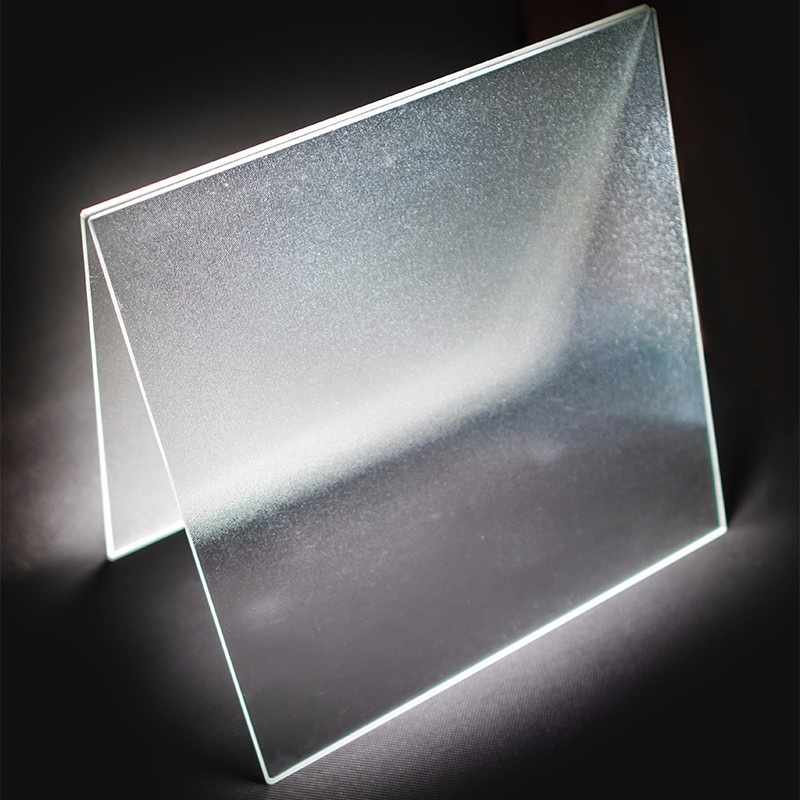Opaque frosted glass has emerged as a pivotal choice in the realm of interior design and architecture, merging aesthetic appeal with functionality. This transformative material offers an ideal balance for both privacy and light diffusion, making it an indispensable element in contemporary design.

From a professional standpoint, opaque frosted glass is not merely a decorative choice but a solution to many design challenges. Its versatility allows it to be integrated into a multitude of settings, including residential, commercial, and public spaces. Whether installed as windows, partitions, doors, or skylights, frosted glass provides a refined and cohesive look that enhances the architectural integrity of a building.
One of the most significant advantages of opaque frosted glass is its ability to provide both privacy and natural light. Unlike traditional opaque materials that completely block light, frosted glass scatters light while diffusing glare, which helps in maintaining a bright and airy environment. This feature is especially appreciated in office settings and urban residential developments where space is at a premium and maintaining a connection with the outside environment is desirable.

Expertise in the installation of frosted glass is crucial to fully harness its benefits. Proper installation ensures the durability and effectiveness of the glass in providing privacy and style. Professionals in the field emphasize the importance of selecting high-quality materials and employing skilled craftsmanship to achieve optimal results. Details such as glass thickness, pattern consistency, and the method of frosting (such as acid etching or sandblasting) can drastically influence the final outcome, affecting both performance and aesthetic appeal.
In terms of energy efficiency, opaque frosted glass also contributes positively. It plays a role in insulating spaces against heat and cold, thereby reducing energy expenses. This insulating property is particularly beneficial in environments that require ecological consideration, aligning with modern sustainable building practices. Frosted glass can also filter harmful UV rays while allowing beneficial daylight, protecting interior furnishings from fading without compromising on light quality.
opaque frosted glass
For businesses looking to integrate opaque frosted glass into their spaces, it stands as a symbol of their commitment to contemporary elegance and efficient functionality. Architects and interior designers often turn to frosted glass when aiming to achieve a minimalist yet impactful look. The glass serves not only a functional purpose but also delivers a subtle statement of sophistication and modernity.
Maintaining the trustworthiness of information regarding frosted glass is crucial, as purchasing decisions often hinge on proven performance and durability. Manufacturers and retailers are tasked with providing accurate data and customer support to ensure clients make informed decisions. User reviews, expert evaluations, and case studies can serve as valuable resources in confirming the material’s efficacy.
Furthermore,
the expandability of frosted glass applications should not be overlooked. Custom patterns, colors, and finishes are available, allowing designers to explore creative avenues that align with specific brand images or personalized home embellishments. This expands the horizon for frosted glass beyond its traditional uses, allowing it to become a canvas for artistic expression.
In essence, opaque frosted glass stands out as a material that reflects true experience and expertise in design. Its ability to transform spaces while meeting functional requirements makes it a trusted choice among industry professionals. As the trend towards open yet private living and working spaces continues, the flexibility and elegance of frosted glass will likely usher it into even greater prominence. Experts in the field consistently recommend it for its reliability and adaptability—a material that not only meets aesthetic standards but also proves its worth through measurable benefits in privacy, energy savings, and overall ambiance enhancement.



